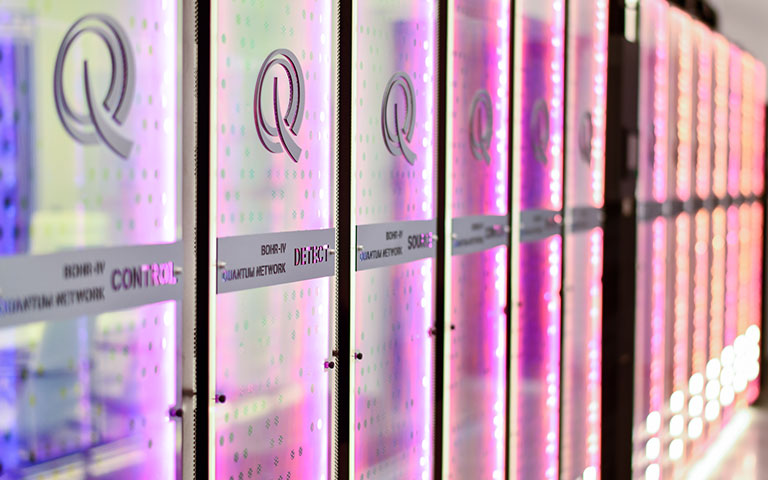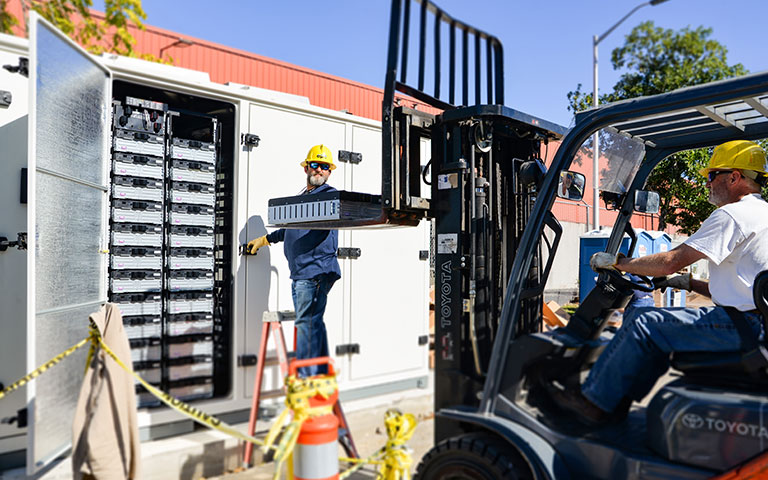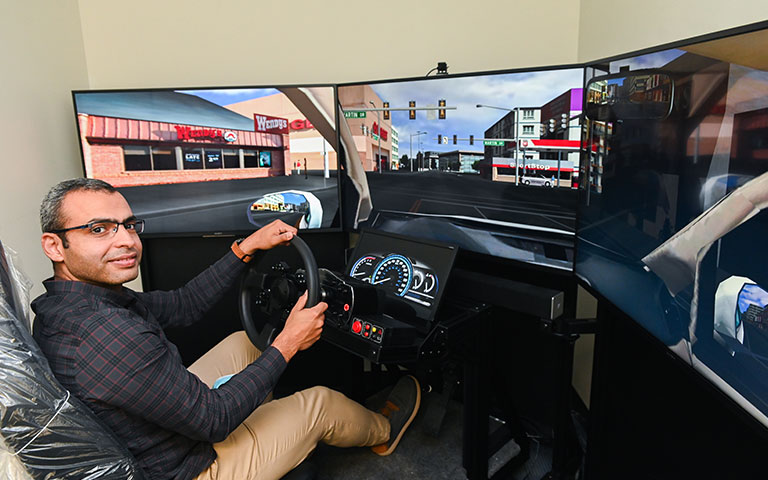Chattanooga is home to America's first commercially available quantum network
The future-proof nature of fiber optic communications continues to open new avenues of innovation that no one imagined when EPB launched the Gig in 2010. Today, as we look forward to what will come next, the next great advancements will be powered by quantum technologies and will be exponentially more advanced than even the fastest, smartest systems in place today.
With a growing global focus on quantum technologies, EPB and Qubitekk launched EPB Quantum Network powered by Qubitekk in fall 2022, making Chattanooga home to America's first industry-led, commercially available quantum network designed for running equipment and applications in an established fiber optic environment. The foundational goal of EPB's effort is to position Chattanooga for new business investment and job creation in a rapidly emerging industry that is already attracting billions of dollars in public and private investment. In fact, according to a report by McKinsey and Company the quantum technology market is expected to grow to a $106 billion industry with more than 350 startups by 2040.
“EPB Quantum Network is a critical resource for lowering the barriers to entry for private companies, so we can move quantum technologies into real-world application.” — Former U.S. Senator Bob Corker
Today, EPB Quantum Network operates on the cutting edge of quantum technology with the aim of commercializing quantum technology by providing a real-world location for businesses, entrepreneurs, researchers, government and universities to run quantum applications, test new quantum technologies and validate equipment performance.
Enhancing the EPB Local Energy Mix to better serve customers
In fiscal year 2022-2023, EPB advanced several projects to expand our Local Energy Mix to enhance power reliability and resiliency while realizing substantial savings. Among them was the completion of the “Power to Protect” microgrid based at the Chattanooga Police Services Center and Fire Department administrative headquarters. With the goal of ensuring power supply continues without interruption in an emergency, the new microgrid can generate and provide enough power to sustain operations 24/7/365 for fire and police functions at the location indefinitely.
The system of 155 kW in solar panels, a 500 kW storage battery and 200 kW diesel generator creates enough power to sustain operations indefinitely during a community-wide emergency. EPB can use its onsite energy storage to decrease community energy costs by reducing TVA's peak demand charge. At the same time, savings created by the microgrid help the location lower its monthly bill by 20 percent.
Using energy storage to reduce peak demand charges will help EPB pay off our investment in Power to Protect within 6-7 years and reap value well beyond the cost of purchase and installation.
EPB continues to expand our microgrid and distributed energy resource investments across our service region to improve power resiliency, support business continuity for critical community resources, and reduce customer costs through peak management.
With Power to Protect, EPB's local distributed energy resources have grown to a combined capacity of 7,850 kW ac, with another 6,155 kW ac in development. Several other projects are in development across our service area, and EPB continues community collaborations to increase power grid dependability.
Fiber futureproofs Chattanooga's roadways
EPB's ongoing collaboration with the Center for Urban Informatics & Progress (CUIP) at the University of Tennessee at Chattanooga (UTC) continues to produce results and an innovative roadmap for the future.
CUIP's Smart City Corridor seamlessly integrates technology that communicates real-time traffic information — and could fundamentally change how we view mobility. CUIP's testbed began as a 1.2-mile section in downtown Chattanooga. Thanks to our community-wide fiber optic network, CUIP can envision regional scalability to nearly 100 intersections with connected vehicle infrastructure. Using cameras, radar, audio and air sensors, CUIP tracks anonymous vehicle and pedestrian data to find accident near-misses with the goal of eliminating all traffic-related deaths in the city. Right now, work is focused along the Martin Luther King, Jr. Boulevard corridor with plans to expand to include all of downtown Chattanooga making it the largest smart city testbed in the United States.
UTC recently elevated the visibility and priority of this research by promoting CUIP Founding Director Dr. Mina Sartipi to head of the newly established UTC Research Institute with focus areas that include Mobility and Transportation, Quantum Technologies and the Center of Excellence in Applied Computational Science and Engineering.


